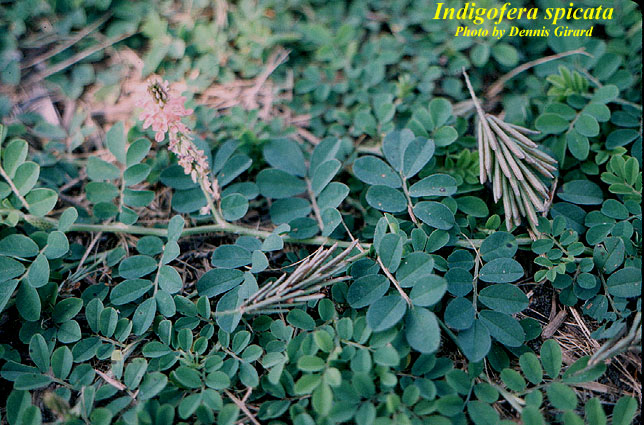Creeping indigo (Indigofera spicata) should not be confused with hairy indigo (Indigofera hirsuta), a taller, erect plant that has long been used as a soil builder and a forage. Hairy indigo can approach waist high, but creeping indigo will barely cover the toe of your brogans. Annual lespedeza (Lespedeza striata) is more similar in appearance, but unrelated and non-toxic. Its prostrate growth habit is similar to creeping indigo, but its leaves are somewhat smaller and it has only three leaflets. The stems of the common lespedeza plants I found across the sidewalk were also woodier than the stems of the creeping indigo.
Identification of any toxic plant is the first step in its control. For your next move, mechanical control may be a feasible option, if the population is small when you find it. If you pull or hoe the plants, make sure you destroy any seeds as well as the plants. Seed can be viable surprisingly early, and the stem and leaves remain toxic after they die and dry. The plant has a deep tap root, so mechanical control can be challenging. Chemical control has not been established, but GrazonNext HL at 24 oz. per acre may be effective, as it provides good control of other legumes. Remember the dead plants in your pasture are still a threat. Manure from animals grazing treated pastures or hay from these pastures should not be used for compost.
Inspect your pastures and lawns for creeping indigo and other toxic plants. Your livestock and your neighbor’s livestock rely on your vigilance. If you suspect you have creeping indigo in your pastures, contact your local County Agent for assistance in identification and management.

Source: Atlas of Florida Vascular Plants where additional photos are available for online viewing.
Source:ufl.edu